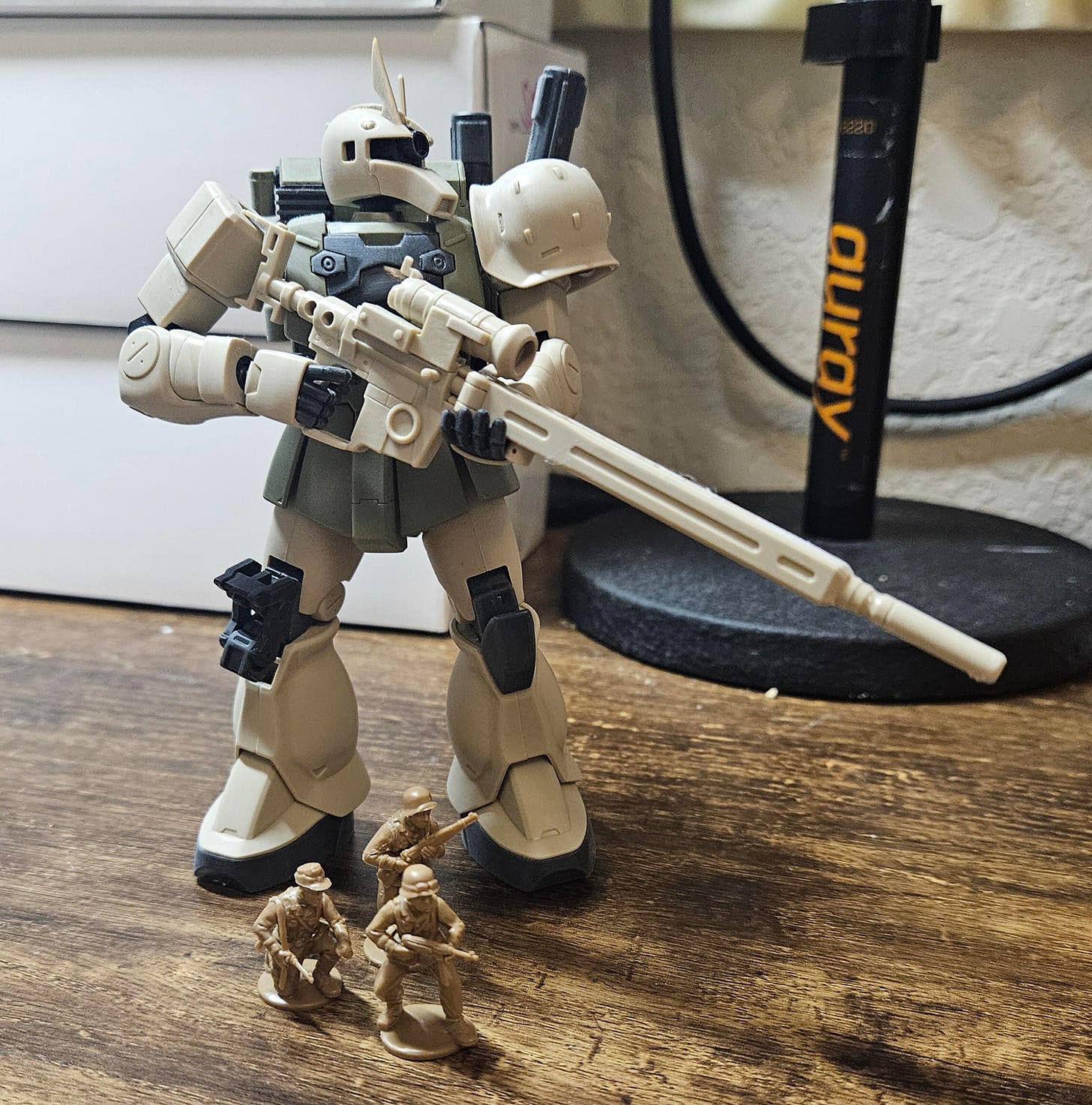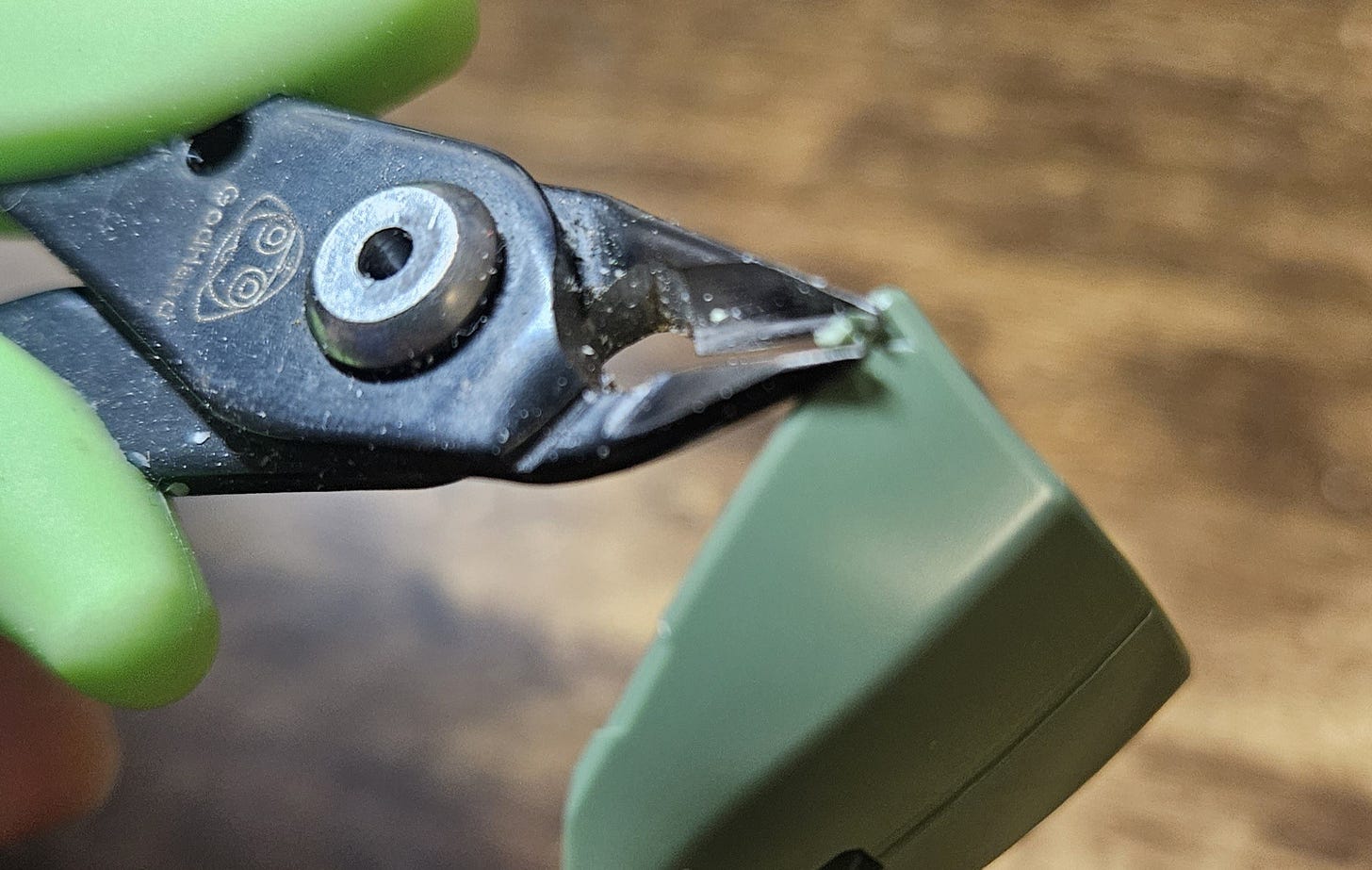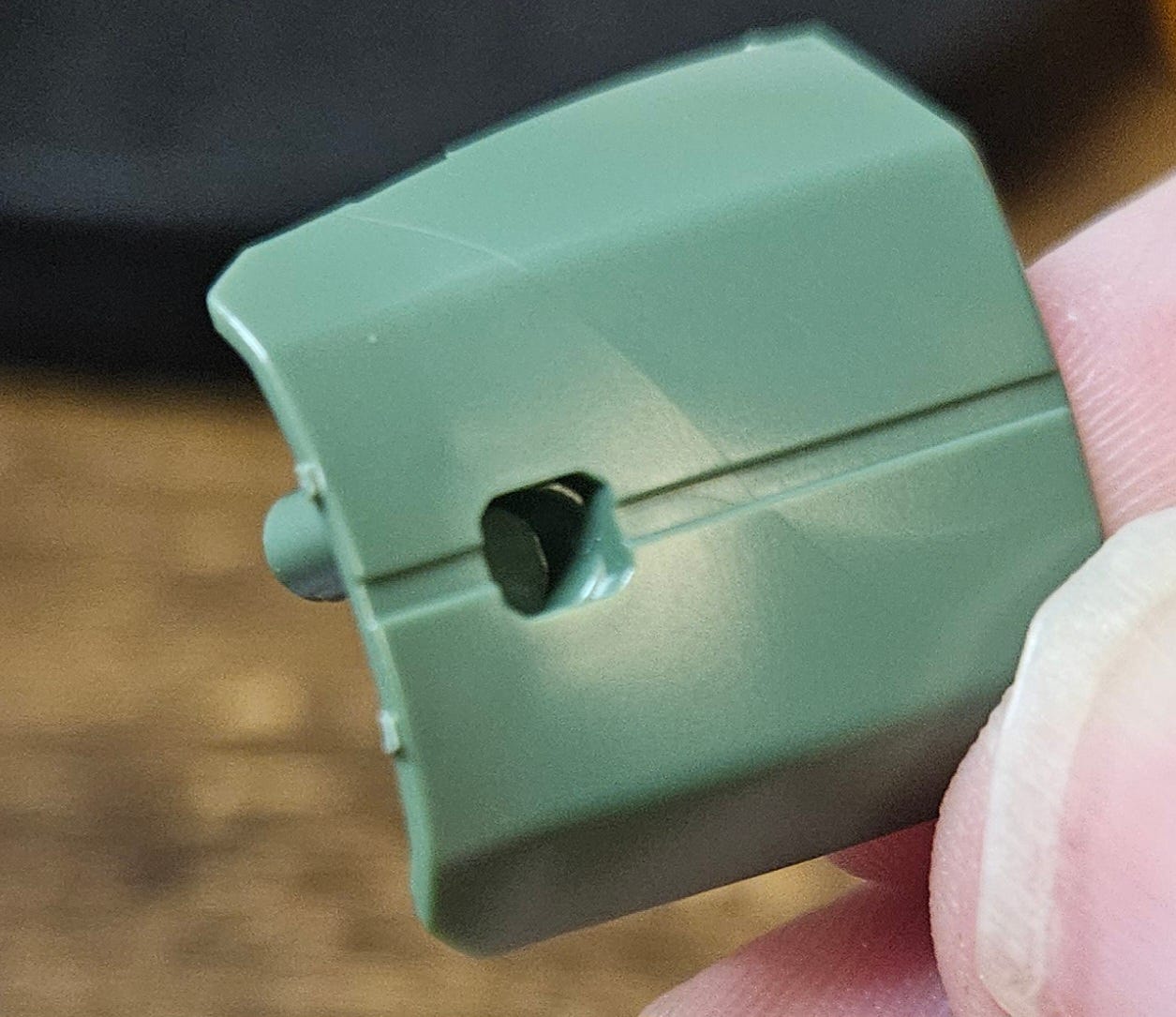
Just What the Heck is Gunpla?
Gunpla is a type of model kit that originated in Japan in 1980. The name “Gunpla” is short for “Gundam Plastic Model” and “Plamo” is short for “Plastic Model.” Each kit is based on mecha starting with the TV series “Mobile Suit Gundam” that premiered in 1979 and includes all succeeding series and many alternate universes. They are popular worldwide, and you can even find Gunpla in big box stores and hobby chains here in the United States.
Gunpla kits are multi-part plastic model kits that snap together to create a highly detailed and fully articulated model that you can pose like an action figure. Gunpla can range from gritty military realism to the heights of sci-fi fantasy. Most Gunpla comes out of the box in color-differentiated plastic, so there's no need to paint it if you don't wish. There are many ways to enhance your Gunpla kits without painting them.
Gunpla kits are closer to traditional models than miniatures; an important distinction. As a wargamer, I was used to miniatures and painting techniques for them. Gunpla brought me into an entirely new world of painting and modeling. In my experience, Gunpla is about building beautiful models and expressing yourself. A popular expression among Gunpla builders is “Gunpla is freedom.”

Selecting Your First Kit
Let's say you want to give Gunpla a try. There are a lot of categories of Gunpla, and the names of each type of model can get confusing. I tend to sort them by scale. Here's a quick overview of the kit sizes you'll encounter the most frequently:
1/144 (about 5” tall): Entry Grade, High-Grade, Real-Grade, and Oldpla/No-Grade (model kits produced before 1990, not beginner-friendly and not snap-fit)
1/100 (about 6” tall): Master Grade, Re 100 (discontinued)
1/60 (about 12” tall): Perfect Grade (not snap-fit, requires glue and screws)
I would start with an Entry-Grade or a High-Grade kit. The easiest but least detailed will be Entry-Grade. Pick whatever looks cool to you. You don't have to be familiar with any lore or Gundam series to enjoy building your Gunpla. If you want something from the original series timeline, look for HGUC kits. You can also get two Gunpla for the price of one by purchasing the Gunpla Starter Set, featuring an Entry-Grade Gundam and Zaku II from the original Mobile Suit Gundam series.
Where to buy Gunpla
I strongly advise against buying Gunpla on Amazon or eBay. Scalpers abound. Most 1/144 kits can be purchased for $15-35 USD. You can also check the Yen price of a kit to see how much it retails for. If you're located in North America, there are several reputable US sellers I would recommend where I have bought most of my current Gunpla collection:
How are Gunpla and Miniatures Different?
Like miniatures, Gunpla is sold in parts on plastic sprues, also called "runners." Snipping parts off the sprues and eliminating mold lines and nub marks are familiar staples of working with plastic models. One key difference lies in how to remove parts from the sprue; You'll want to use a two-cut technique, outlined below. Here are the following tools you’ll need:
Double-bladed nipper (aka flush cutter, the kind you normally use for cutting miniature sprues)
Hobby knife or mold line remover
Modeling sandpaper sticks or sponges
First, take your nipper and cut away from the part, close to the gate,
Then, trim down the remaining plastic until it's gone. This two-cut technique puts less stress on the plastic and has less potential for discoloration, which is important if the kit isn’t being painted. If you can, use a single-bladed nipper for even less stress.
Finally, remove the nub mark using sandpaper sticks or sponges. Sand in one direction; otherwise, you risk scratching the plastic terribly. Start with 400 grit, then 600, then 800. You can continue with higher grits of sandpaper to achieve the desired plastic finish. If you are painting, you can stop at 600 grit since the paint will cover the nub mark.
Unlike most miniatures, most modern Gunpla are snap-fit and do not require any glue to assemble. The instructions included in the kit will be in Japanese. Here is an English guide to the symbols in the written instructions. Follow the instructions in the box until your Gunpla is built and finished!
To make the model look less like plastic, spray a coat of matte varnish (aka top coating) and use enamel-based panel liners from Tamiya to create a higher contrast in the recessed areas. Clean up mistakes made while panel-lining using a Q-tip soaked in enamel paint thinner.
Can I use Miniature Paints on my Gunpla?
The short answer is yes, but if you wish to paint your Gunpla, you'll find that the type of plastic used is very smooth and I don't find it very suitable for acrylic paints. The smoothness of the plastic makes it difficult for acrylic paint to stick. I have had a little success by sanding the entire kit to make the primer adhere better. Then I seal it with gloss varnish and allow it to cure. However, this process can be a test of patience.
You'll want to use something stronger like lacquers, which require a respirator, good ventilation, and an airbrush. I recommend Tamiya or Mr. Hobby lacquers, and if you don't own an airbrush, you can buy individual rattle cans for your project. You can get great results by rattle can priming, and then painting the parts of your Gunpla in different colors.
A Matter of Scale
One of the challenges in this marriage of Gunpla and wargaming is the size of the Mobile Suits. The canon height of most Mobile Suits is about 19 meters, or roughly 62 feet, meaning they would dwarf the infantry on the ground. The most common scale for Gunpla is 1/144. 28mm infantry models, by contrast, are closer to 1/56, which would land us in the Perfect Grade category for Gunpla (1/60) to be in the ballpark. A PG kit is roughly a foot tall and would make for a rather impractical tabletop experience.
On the other hand, to make the miniatures match the 1/144 kits, we could use 10-15mm infantry models. These models are a less common scale, but a good solution for infantry when mounted on hexagonal or rectangular bases (think Flames of War). Infantry and vehicles played a major part in the original Mobile Suit Gundam, so it’s only fitting they should have rules, too. Mobile Suit Skirmish has rules that cover infantry and vehicles in this scale.
All That’s Great, But How Do I Game With It?
There are several systems that are designed for battling mecha at 1/144 scale, allowing you to incorporate Gunpla into your miniature wargaming hobby:
30 Minute Missions (a game, but also a separate series of model kits by Bandai)
And many, many more that I have not had the time to research. I’ve mainly explored Mobile Suit Skirmish, skimmed MechaStellar, and I’m currently exploring using my High Grade kits in a One Page Rules army with their Grimdark Future ruleset. I've decided to refer to the Mobile Suits as “battlesuits” in the custom army book I’m writing for them. I'm interested in building a Zeon force from Gundam’s Universal Century timeline because of their iconic mono-eye suits. I'm starting with the MS-09F Domtropen in desert colors from the 0083 Stardust Memory OVA. I like it because it's got that chunky 80s mecha aesthetic and comes with a giant rocket launcher. Below is a picture comparing the size of 28mm historical infantry from Perry next to an HG Zaku I Sniper. I was pleasantly surprised how well they mesh! I'll be writing more about this force in articles to come as it develops.

Where to go from here?
To learn more about Gundam in general, visit en.gundam.info - the site is an absolute trove of information about the franchise. If you enjoyed this post, please share it.









